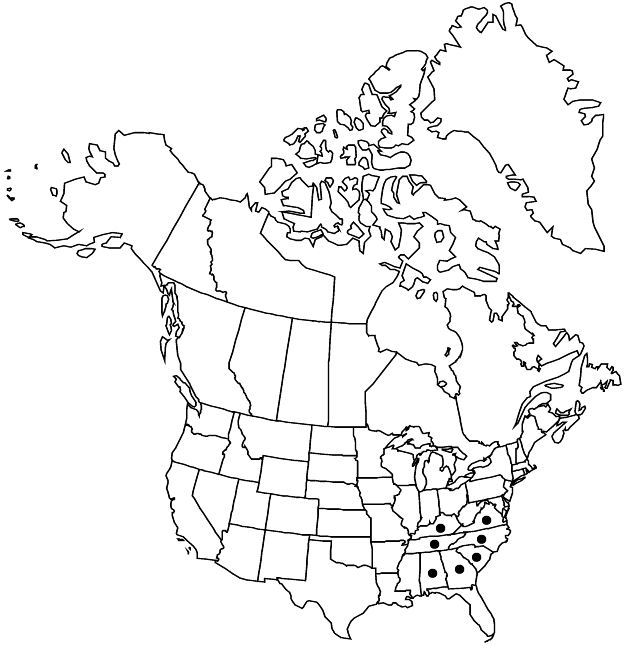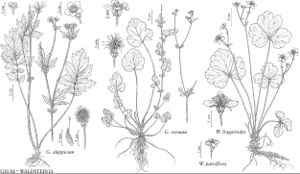Difference between revisions of "Waldsteinia parviflora"
Bull. Torrey Bot. Club 25: 137. 1898.
FNA>Volume Importer |
imported>Volume Importer |
||
| (One intermediate revision by the same user not shown) | |||
| Line 58: | Line 58: | ||
|publication year=1898 | |publication year=1898 | ||
|special status=Endemic;Illustrated | |special status=Endemic;Illustrated | ||
| − | |source xml=https:// | + | |source xml=https://bitbucket.org/aafc-mbb/fna-data-curation/src/2e0870ddd59836b60bcf96646a41e87ea5a5943a/coarse_grained_fna_xml/V9/V9_106.xml |
|subfamily=Rosaceae subfam. Rosoideae | |subfamily=Rosaceae subfam. Rosoideae | ||
|tribe=Rosaceae tribe Colurieae | |tribe=Rosaceae tribe Colurieae | ||
Latest revision as of 22:53, 5 November 2020
Herbs, 10–20 cm. Leaves mostly ternately compound, rarely merely deeply lobed; leaflets broadly cuneate-obovate, 3–5 cm, lateral ones asymmetric, margins commonly shallowly and irregularly lobed, surfaces sparsely hirsute. Inflorescences 3–7-flowered. Flowers 8–10 mm diam.; hypanthium obcampanulate, 2–4 mm, strigose; petals elliptic to elliptic-lanceolate, 2.5–4.5 mm, shorter than to barely exceeding sepals, apex often acute; carpels 3 or 4.
Phenology: Flowering Mar–Apr.
Habitat: Woods, mountains, and piedmont
Elevation: 100–400 m
Distribution

Ala., Ga., Ky., N.C., S.C., Tenn., Va.
Discussion
Waldsteinia parviflora closely resembles W. fragarioides but has generally smaller flowers with petals shorter than to subequal to the sepals. The possibility that W. parviflora originated as a hybrid between W. fragarioides and W. lobata should be investigated.
Selected References
None.
